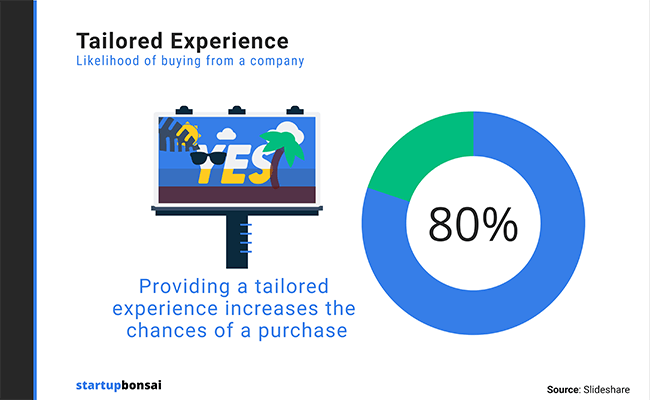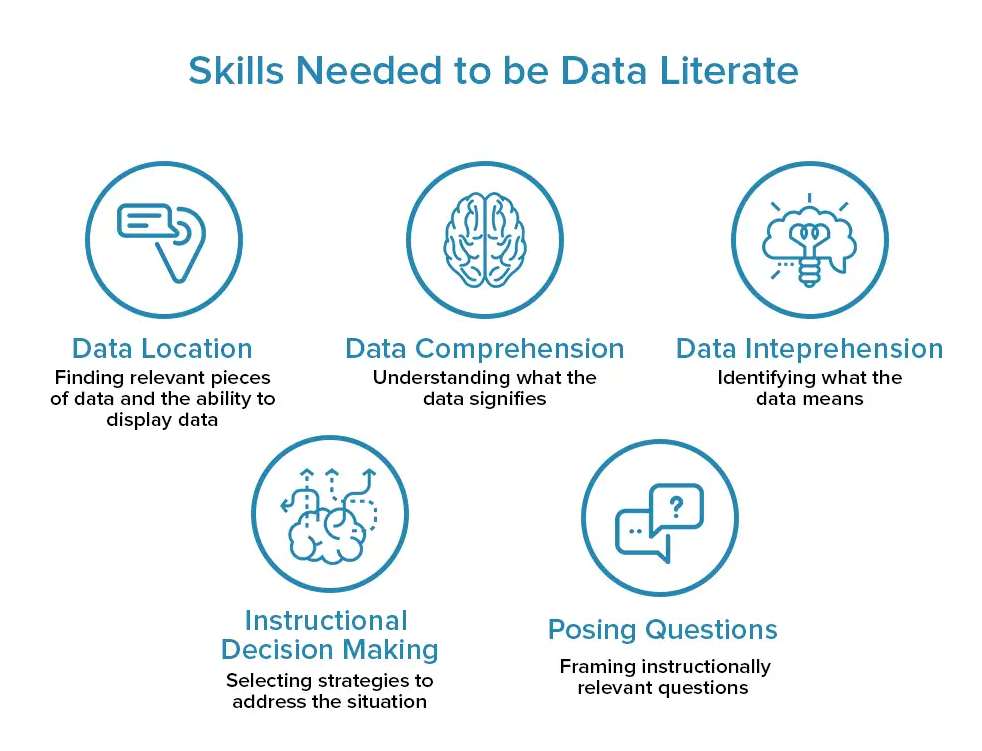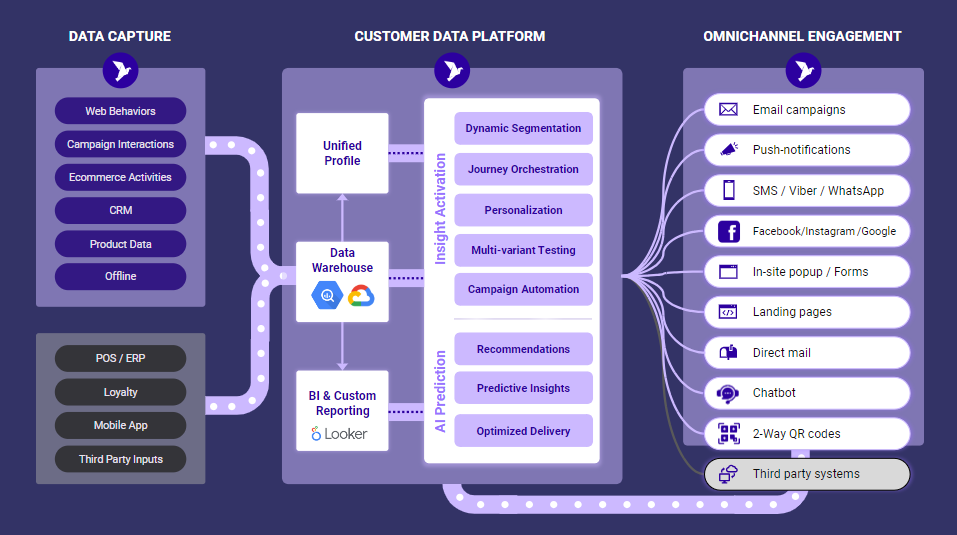In today’s dynamic retail landscape, understanding customer behavior is no longer a luxury, it’s a necessity. The pressure to deliver targeted messaging and product recommendations is undeniable. According to GlobeNewswire, the Retail Analytics Market Size is projected to reach USD 40.4 Billion by 2032. This significant growth indicates a rising demand for solutions that unlock customer insights. This is where retail customer analytics comes in. By systematically analyzing customer data across touchpoints, retailers can gain a comprehensive view of purchasing patterns and unlock a wealth of opportunities for optimization and growth. Through advanced analytics and algorithms, retailers can uncover hidden trends, segment customer demographics, and make data-driven decisions that strengthen customer relationships, boost profitability, and ultimately, drive significant revenue.
In this article, we’ll explore the essentials of retail customer analytics for retail executives, including best practices for maximizing their value.
Key takeaways for monetizing retail customer analytics
By harnessing the power of customer analytics, you can gain a competitive edge, build stronger customer relationships, and drive significant revenue growth.
- Leveraging point-of-sale data and online purchase histories enables retailers to discover valuable shopping insights for their promotions and better personalize their product recommendations.
- Implementing beacon technology (Bluetooth transmitters placed in retail stores) permits retailers to track in-store customer behaviors while using heat maps to optimize their floor plans.
- Mobile analytics allow retailers to analyze app usage and loyalty program enrollment, helping them optimize their push notifications and rewards to maximize customer engagement.
- AI and machine learning help retailers predict demand patterns and streamline their supply chains to cut costs and avoid stock shortages.
- Real-time insights on customer demographics and digital signage can help retailers enhance the in-store experience.
Understanding retail customer analytics

Retail customer analytics serve as a powerful guide in the journey toward monetizing customer data, simplifying the path toward sustainable business growth. By strategically collecting and interpreting these analytics, businesses can unlock additional revenue streams and stay ahead of their competition.
Customer analytics allow retailers to experiment with new strategies and concepts in a low-risk manner. Thus they can evaluate which approaches are most effective before implementing them on a large scale. In other words, retailers can optimize their processes and avoid wasting resources on initiatives that don’t align with their customers’ preferences.
What are they?

Retail customer analytics is the cornerstone of modern retail strategy, offering invaluable insights into customer behaviors and preferences. By harnessing various data sources such as point-of-sale records, purchase histories, demographic data, app metrics, and behavioral data, retailers can unlock a treasure trove of actionable insights.
Let’s dive into how retailers can leverage customer analytics to drive growth and enhance the shopping experience:
- Targeted Marketing Automation: Utilize customer analytics to craft personalized marketing campaigns tailored to individual preferences and purchase history. By understanding customer behavior, retailers can send targeted promotions, boosting engagement and sales.
- Personalized Product Recommendations: Enhance the shopping experience both online and in-store by leveraging customer data to provide personalized product recommendations. By analyzing purchasing patterns, retailers can suggest products that resonate with specific demographics, driving sales and customer satisfaction.
- Optimized Merchandise Planning: Gain valuable insights into product popularity and demand by analyzing customer data. This information guides merchandise and inventory planning, ensuring retailers stock the right products in the right quantities, minimizing stockouts, and maximizing revenue.
- In-Store Layout Optimization: Analyze in-store behavioral data to optimize store layouts and signage placement. By understanding customer dwell time and display engagement, retailers can create an optimized shopping environment that enhances the customer experience and drives sales.
- Supply Chain Optimization: Forecast demand changes and future buying patterns using customer analytics to optimize supply chain operations. By accurately predicting demand, retailers can streamline inventory planning and management, reducing costs and improving efficiency.
- Captivating Loyalty Programs: Develop compelling loyalty programs and personalized rewards based on customer profiles and purchase history. By enhancing loyalty programs, retailers can increase customer retention and lifetime value, driving repeat purchases and fostering brand loyalty.
Why is monetizing retail customer analytics so important?

Retail customer analytics have grown in importance for retailers expecting to compete in today’s landscape. The retail industry now offers more shopping options than ever before. As a result, retailers must find increasingly novel ways to differentiate themselves while catering to customers’ needs. Leveraging customer analytics provides valuable insights into what resonates with the business’s target audience and here are some tips on how to accomplish that:
- Analyze purchase histories
- Survey customer demographic profiles
- Track online browsing behaviors collected from various customer contacts
- Develop highly personalized marketing automation and product personalization offerings.
- Discover new insights for engaging customers
Furthermore, fresh developments in omnichannel shopping further highlight the importance of customer analytics for retailers. Customers now interact with brands across various online and offline channels. Analytics solutions allow retailers to aggregate customer data from all points of interaction. A unified view is important because it allows retailers to deliver a consistent, seamless experience, no matter how the purchase is made.
Retail customer analytics are now a requirement for businesses to succeed. Retailers must strategically use analytics to effectively compete in today’s marketplace and meet ever-changing customer demands.
Key benefits of monetizing retail customer analytics

Retail customer analytics presents a wealth of benefits for retailers, profoundly impacting their operations and profitability.
- Firstly, it enriches customer experiences by customizing recommendations and promotions based on individual preferences and purchase history. This personal touch cultivates loyalty and satisfaction, driving repeat purchases and brand advocacy.
- Secondly, customer analytics streamlines operations by offering insights into product preferences, demand trends, and store layout effectiveness. By comprehending customer behaviors, retailers can fine-tune inventory management, prevent stockouts, and boost overall operational efficiency.
- Furthermore, customer analytics empowers proactive supply chain management, enabling retailers to anticipate demand shifts and optimize inventory levels. This proactive approach minimizes excess inventory and lowers associated costs.
- Ultimately, harnessing retail customer analytics translates into increased profitability through enhanced sales, optimized operations, and improved customer retention. In today’s competitive landscape, data-driven decision-making is essential for retailers striving for sustainable growth and success.
Personalization statistics on the retail customer experience

Statistics confirm the obvious benefits of personalization regarding the customer experience: 89% of marketers see a positive return on investment just from integrating more personalization into their work. Retailers can use their customer data analysis to gain insights into customers’ preferences and customize their strategies accordingly. These strategies can increase customer satisfaction and, along with it, spending.
Additional research reveals that 60% of consumers develop brand loyalty after a personalized shopping experience. Through the use of purchase histories and profiles, businesses can curate a unique and engaging experience for each shopper. It seems that acknowledging customers as unique individuals enhances their loyalty to the brand proving that:
- Consumers are largely open to data sharing when the data they provide are being used wisely in their favor, not for mere generic marketing purposes.
- Retailers that use analytics can offer targeted promotions that resonate with their target audiences.
- Personalization can foster better relationships (and, thus, long-term loyalty) while growing revenue and CLV.
With the ongoing advancements in analytics, the retail sector can elevate its personalized service, interaction, and attention to customers. A model that values data as a means of enlightenment rather than exploitation can lead to mutually beneficial outcomes for both parties, fostering collaborative growth based on their shared interests.

Best practices for monetizing retail customer analytics
1. Leveraging data for enhanced customer insights
The significance of data collection lies in establishing feedback loops, which are vital for constantly enhancing the customer experience. Retailers can gain valuable insights by actively seeking customer reviews, comments, and suggestions, helping them identify areas for improvement and what’s already working well. Analyzing this feedback enables businesses to make necessary adjustments, strengthening customer relationships and driving higher satisfaction levels in the long run.
How to do it:
- Regularly gather customer feedback by utilizing surveys, polls, chatbots, and more.
- Evaluate qualitative and quantitative feedback data to uncover trends and attitudes regarding products, services, website usability, and other variables.
- Employ insights to test minor changes, evaluate their impact, and adjust customer-facing processes.
2. Setting up campaigns to convert repeat visitors into new customers with personalized omnichannel sequences
Retailers can use website tracking and in-store behavioral analysis to identify potential customers who frequently visit but haven’t purchased yet. To nurture these visitors, retailers could try crafting individualized omnichannel strategies incorporating targeted emails, push notifications, and personalized mobile ads.
How to do it:
- Send customized reminder emails featuring products the visitor has previously viewed.
- Use push notifications to offer limited-time discounts to encourage customers to make their first purchase.
- Employ social media ads to retarget repeat visitors, presenting them with complementary products based on previous browsing history.
3. Optimizing inventory with predictive analytics

Retailers can optimize their inventory based on purchasing patterns and demand forecasts derived from customer data. Effectively anticipating new trends allows retailers to proactively manage their stock, avoiding unnecessary expenses from over- or under-stocking.
How to do it:
- Predict future product demand and sales trends to determine how long it will take to replenish the inventory.
- Avoid running out of stock or having too much inventory by proactively adjusting the levels of seasonal or high-demand items.
- Use sales forecasts and beacon data to place large orders for popular items ahead of time, or prolong the life span of slow-selling products by offering discounts.
4. Utilizing customer feedback loops
Collecting feedback through surveys, polls, chatbots, and other methods offers valuable insights into both strengths and areas for improvement, as seen from the customer’s perspective.
How to do it:
- Consistently seek customer feedback through various channels.
- Evaluate the feedback data to recognize trends and gauge customers’ attitudes.
- Continuously make slight adjustments based on feedback insights and evaluate their impact to improve the customer experience.
5. Setting up personalized retention strategies for at-risk-of-churn customers
To achieve better retention rates, customer analytics are used to identify customers who might end their relationship with the retailer soon. The retailer can then implement personalized retention strategies to engage these at-risk customers.
How to do it:
- Design segments to look for declines in spending and engagement.
- Send special offers to loyalty program members who have yet to earn rewards recently to encourage them to become active again.
- Tailor exclusive discounts or bundled promotions for at-risk customers who have regularly made past purchases in specific categories.
6. Prioritizing data security and compliance

To maintain customers’ trust in the brand, it’s vital to prioritize the protection of their privacy and the security of their data.
How to do it:
- Enforce strong access controls and encryption protocols.
- Regularly perform security audits and vulnerability tests.
- Make sure that all data processing complies with privacy laws and regulations.
7. Hyper-segmenting high-value customers
Retailers can prioritize high-value customers by hyper-segmenting them and offering them personalized attention and offers.
How to do it:
- Study customers’ spending patterns and lifetime value to determine the most significant customer segments.
- Customize marketing campaigns, loyalty programs, and in-store experiences for these segments.
- Optimize engagement and spending by testing new ideas with specific groups.
8. Implementing big data to identify dynamic segments, like seasonal buyers
The implementation of big data to segment customers means identifying fluctuating customer segments, such as people who buy products only occasionally. Dynamic segment identification helps retailers optimize their targeted campaigns.
How to do it:
- Analyze spending patterns to detect emerging or changing segments.
- Test personalized marketing tactics using dynamic segments for seasonal events or promotions.
- Make the most of the relevant purchasing opportunities by optimizing the inventory for various short-term segments.
9. Fostering a culture of data-driven decision-making

A data-first approach assists retailers in making informed choices that align with customers’ needs and the market’s realities. Regularly analyzing metrics and KPIs helps retailers uncover hidden trends, opportunities, and areas for improvement.
How to do it:
- Provide data literacy and analytical thinking training to employees.
- Establish regular metric and dashboard reviews.
- Encourage interdepartmental collaboration for shared insights.
10. Regularly auditing and cleansing data (once per month)
Keeping customer data clean and accurate enables retailers to deliver personalized experiences and effective communication.
How to do it:
- Assign a team to conduct monthly audits of all customer databases and profiles.
- Check for and remove any duplicate, incomplete, or erroneous records.
- Update customer information like unsubscribers, addresses, preferences, or device data.
Implementing retail analytics best practices: challenges and solutions for monetizing retail customer analytics
Common challenges retailers face in effectively using analytics include:
- Resource constraints
- Data silos
- Change resistance
Limited budgets can hinder the hiring of extra data scientists or the acquisition of new technology. Developing a unified perspective becomes difficult when customer data is distributed across different departments. In addition, getting organizational support for process changes based on data insights is harder than it sounds.
However, basic tasks such as cleaning databases or conducting feedback surveys can be cost-effective while producing beneficial outcomes. To overcome departmental segregation, retailers should slowly integrate collaborative data systems.
Examples of retail customer analytics to monitor monthly
Various reports can be used to better monetize retail customer analytics, such as:
- In-store analysis report: provides crucial performance metrics for each retail location, such as sales, foot traffic, and average spending
- Customer profiles report: identifies valuable audience segments through customer demographics, purchasing behaviors, and other factors
- Marketing campaign performance report: evaluates a marketing initiative’s impact on new customer acquisition and repeat purchases
- Customer churn report: identifies at-risk customers to develop retention strategies for
- Inventory performance report: optimizes supply chain management by tracking inventory levels, sales, stock-outs, and other metrics
- Supply chain management report: analyzes forecasting accuracy and lead times to guide production planning and reduce stocking costs
How ContactPigeon’s CDP can enhance customer data analytics for retailers

ContactPigeon’s customer data platform (CDP) merges data from various sources into one customer profile, providing valuable insights for retailers. This allows marketers to run personalized omnichannel campaigns and analyze how well they perform.
ContactPigeon’s CDP features:
- Unified customer profiles: By combining data from different sources, the CDP creates a complete and comprehensive overview of every customer in real-time, eliminating silos.
- Advanced analytics and dashboards: ContactPigeon helps retailers collect and track various important KPIs with custom-made BI data models, including eCommerce, in-store, or marketing.
- Campaign management and omnichannel orchestration: The CDP enables marketers to build and analyze omnichannel campaigns.
Other insightful resources on retail customer analytics
- Mastering CDP Strategies: A Comprehensive Guide for 2024
- The 26 Most Important Retail KPIs Every Retailer Should Monitor
- What Is a Customer Data Platform, and Why Does a Retailer Need One?
- CDP vs CRM: Differences and Key Benefits For Retailers
- Choosing The Right Customer Data Platform (CDP) for eCommerce
- CDP Pitfalls for eCommerce Businesses
- How to Use Zero and First-Party Data for Marketing Personalization in eCommerce
- Customer Profiles for Retailers: Analysis, Examples, and Best Practices to Increase Retention
Maximizing revenue with retail customer analytics is a must in 2024
To wrap up, proper monetization of these strategies can significantly boost a brand’s AOV (average order value) and CLV (customer lifetime value).
The utilization of customer data will be the key factor in determining retailers’ success or failure in the years to come. To achieve long-term revenue growth and profitability, businesses must prioritize retail analytics as a core competency. Those who take decisive action will gain invaluable insight into their customers, ensuring a sustainable competitive edge for years to come.
To book a free consultation session with ContactPigeon’s CDP experts call us at +30 21 1800 6178 or simply fill out the relevant form on our website.

Let’s Help You Scale Up




![Benchmarking Growth Strategies of Top Fashion Retailers [Study]](https://blog.contactpigeon.com/wp-content/uploads/2025/11/top-fashion-retailers.jpg)